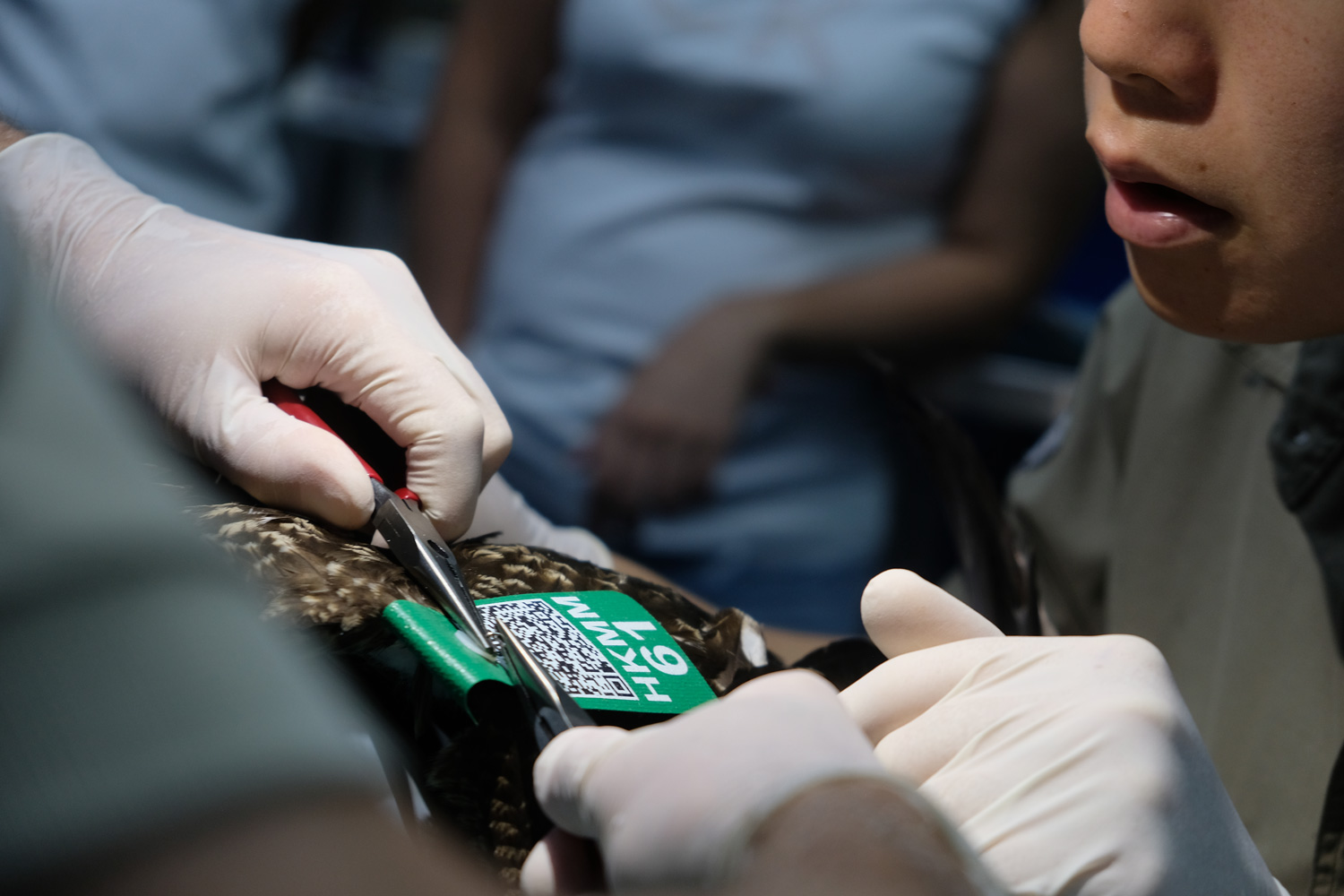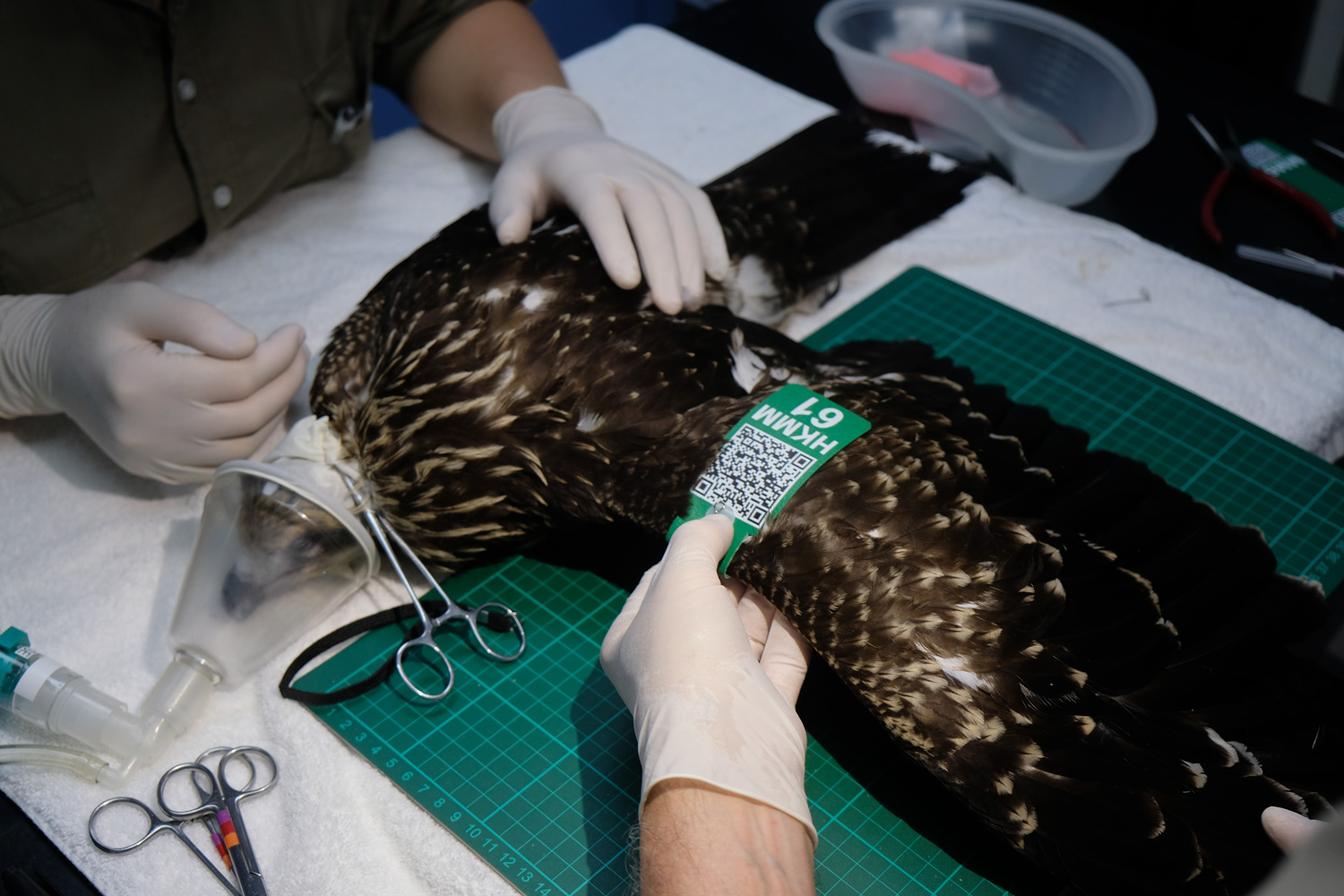
|
Background / Introduction KFBG is the first organisation in Hong Kong to introduce wing tagging as a method for monitoring black kites, with the first wing tags already employed on one individual bird. The black kite is the most common diurnal raptor in Hong Kong. Over the past 25 years of rescue work, KFBG has received 423 kites, of which 255 have been successfully released: a commendable release rate by international wildlife rehabilitation standards of 60%. However, as is common with many centres, post-release survival data is lacking. Wing tagging is an effective and safe method for ecologists and conservationists to retrieve data about animal movements, migration, nesting/breeding patterns, localities and growth rates, and territoriality. Rescue centres involved in wildlife rehabilitation and reintroduction may consider this technique a useful way to monitor post-release survival and behaviour. |
 |
Wing tags used in a related species in the UK (Photo: red kites, John Barrett) |
|
Why can wing tags help to improve rehabilitation success?
Wing-tagging procedures 1. Health check and wing tag application Rehabilitation and release requirements will be assessed for every bird according to the current KFBG guidelines. The rehabilitation and veterinary teams must be satisfied that kites are injury-free, disease-free and fit to survive in the wild prior to release. All kites arriving at KFBG undergo initial triage and stabilisation. Once stable, they are placed under anaesthetic, during which the following is carried out by a veterinarian:
During their stay at the rescue centre, kites are also fitted with a leg band according to British Trust for Ornithology standards. |
|
2. Wing tag design and application 
Wing tag mounted on a juvenile black kite (Credit: KFBG) 
Wing tag mounted on a juvenile black kite (Credit: KFBG) 
Wing tag mounted on a juvenile black kite (Credit: KFBG) 
Wing tag mounted on a juvenile black kite (Credit: KFBG) 
Wing tag mounted on a juvenile black kite (Credit: KFBG) |
|
KFBG wing tags have been designed specifically for the size and shape of black kites. KFBG wing tags are made of green, UV-proof, soft, flexible, lightweight plastic canvas. The white lettering is also UV-proof, meaning it will not be degraded by continuous exposure to sunlight. The wing tags will carry the following information:
The tag number and QR code may not be visible at height. However, a photo taken by a member of the public may show the code, allowing the photographer to connect to the online form and fill in the sighting details. For the details of KFBG Black Kite Wing Tagging Project, please click here “Please help us with your sightings of wing-tagged kites”Your feedback is essential to our project, please help by filling the form below if you spot a kite with a wing tag. You will be greatly assisting our project to determine where the birds go and how long they live. |
Report a tagged kite (Please sign in Google account to view the following form)

